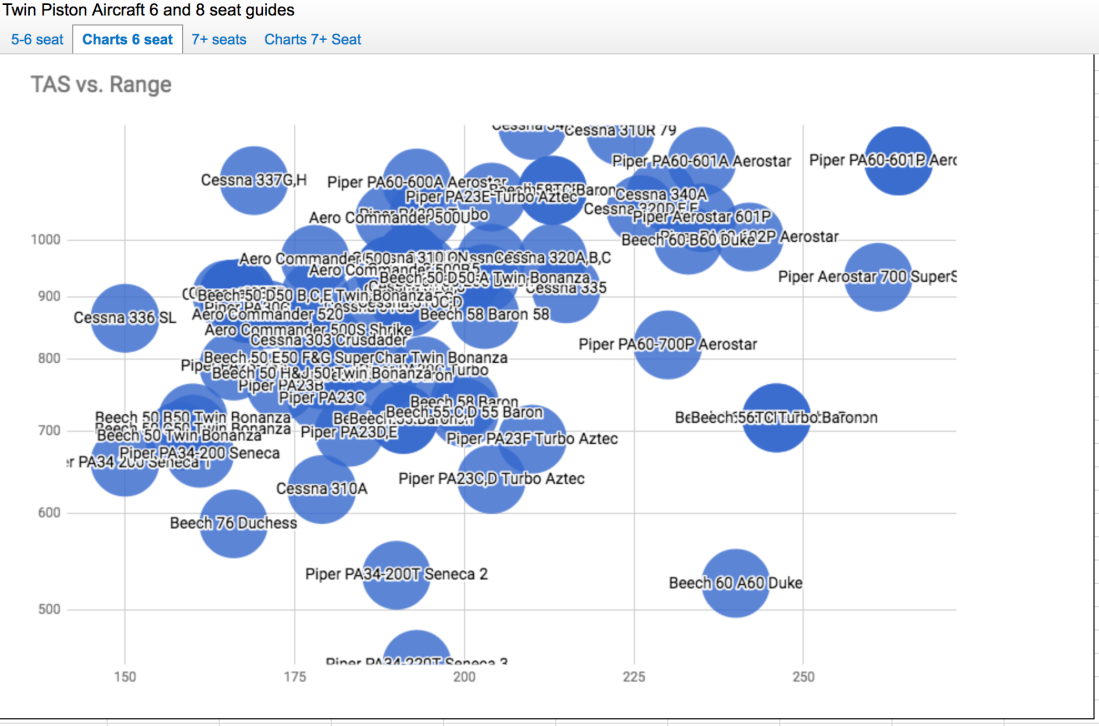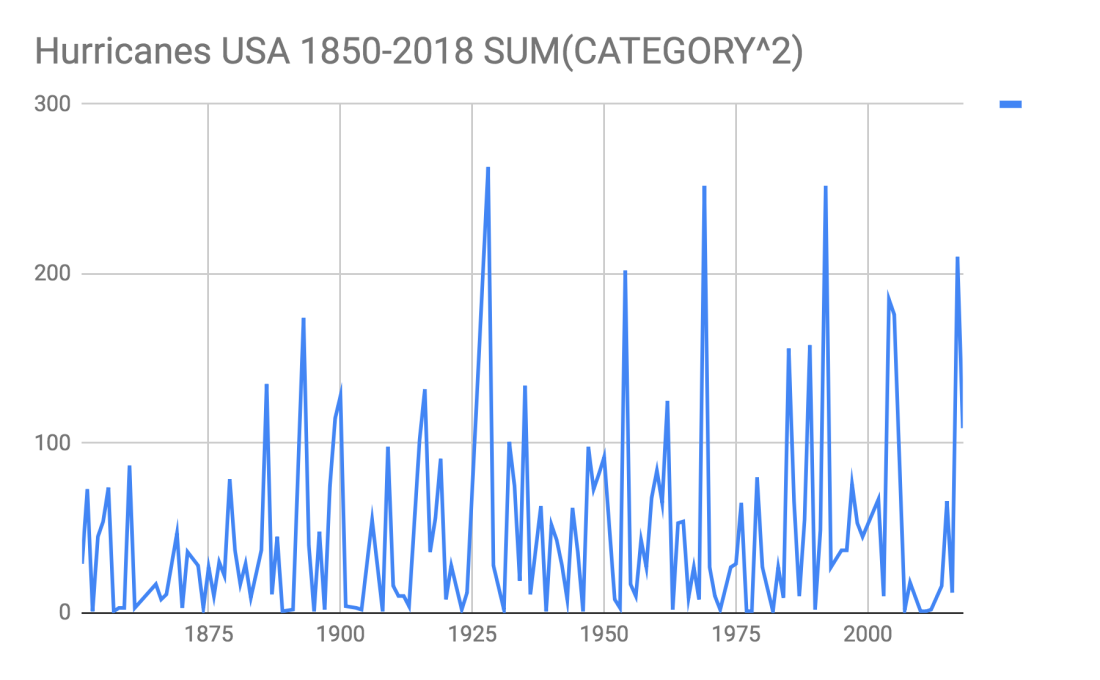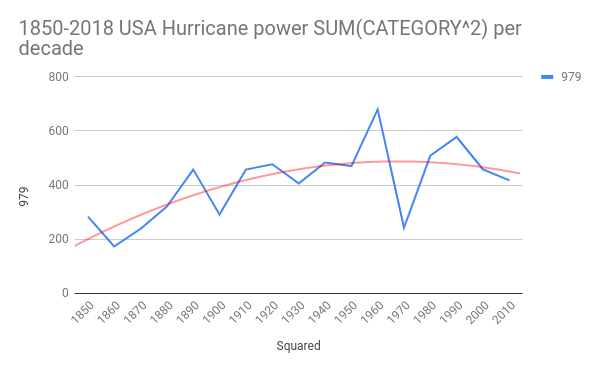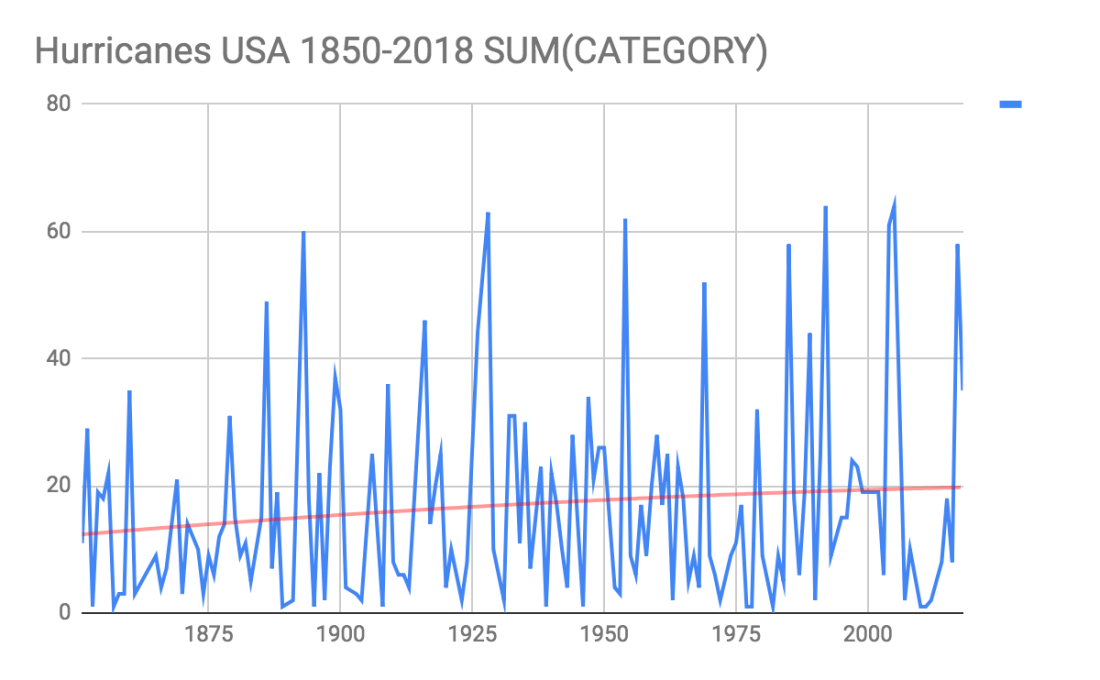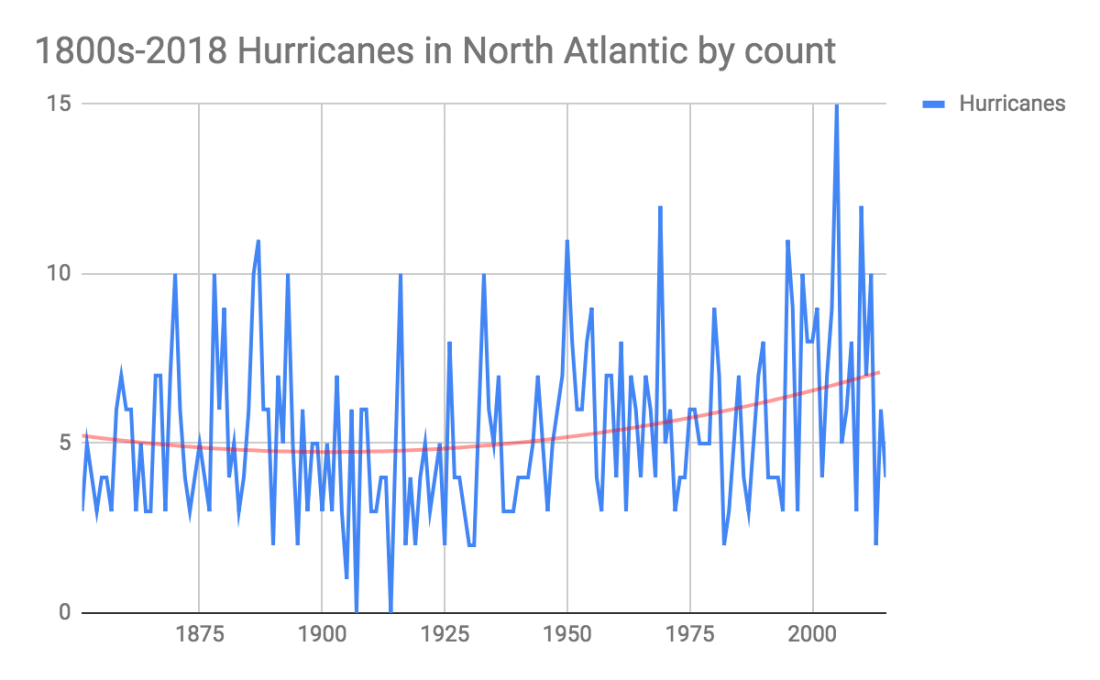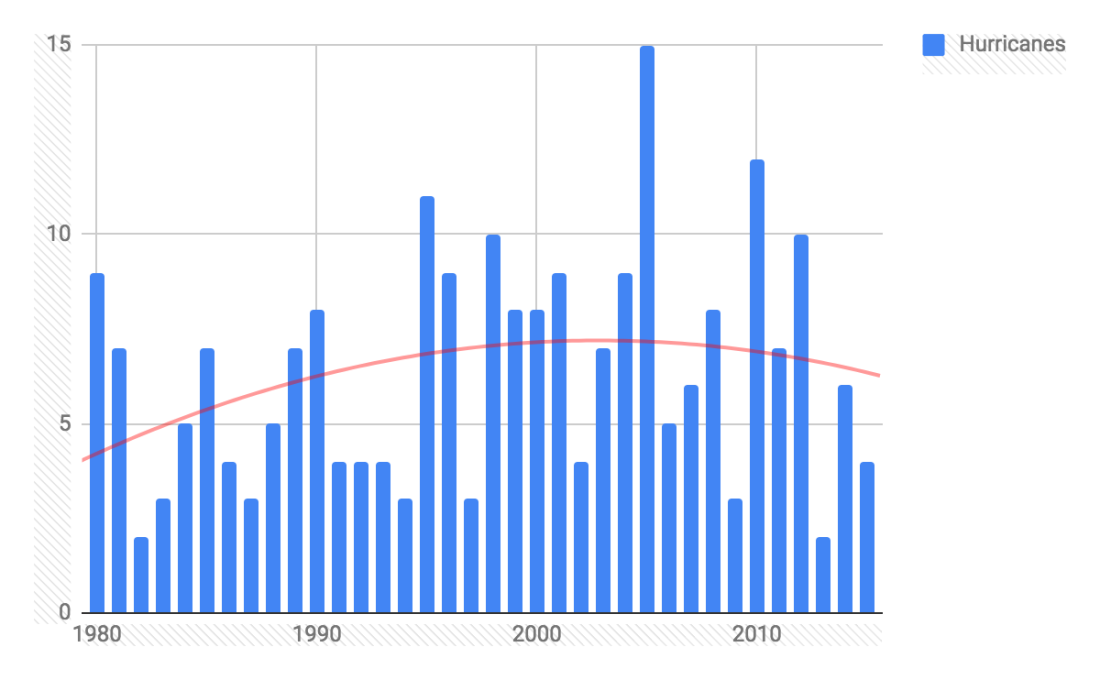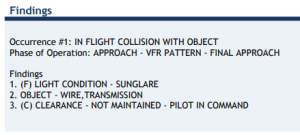FALCON 50

Dimensions
| Wing Span | 61′ 10″ |
| Length | 57′ 11″ |
| Height | 22′ 10″ |
| Wheelbase | 23′ 9″ |
| Main Gear Track | 13′ 1″ |
Limitations
Weights
| Max Ramp Weight With SB F50-161 Unpaved Runway Operations |
38,800 lbs 40,780 lbs 33,070 lbs |
| Max Takeoff Weight With SB F50-161 Unpaved Runway Operations |
38,800 lbs 40,780 lbs 33,070 lbs |
| Max Landing Weight Unpaved Runway |
35,715 lbs 33,070 lbs |
| Max Zero Fuel Weight | 25,570 lbs |
The above weights are maximum certificated limits. The actual maximum weights for a particular flight may vary due to the performance limitations. If the aircraft can not meet the required runway or climb performance, the maximum takeoff and/or landing weights are reduced such that the requirements are met. See the performance charts in the AFM for details.
Speeds
| Vmo / Mmo Sea Level to 10,000 ft Above 10,000 Feet One or both Hyd Systems Inop Cracked Windshield DV Window Open Windshield Wiper Operation Mach Trim Inop / Autopilot disengaged |
350 to 370 kts / Linear 370 kts / 0.86 Mach 260 / 0.76 Mach 230 kts 180 kts 205 kts 0.78 Mach |
| Va Turbulent Air Penetration |
210 kts 280 / 0.76 Mach |
| Vfe Slats Only Slats + Flaps 20 Deg Slats + Flaps 48 Deg With Auto Slat light ON |
200 kts 190 kts 175 kts 270 kts |
| Vlo Vle |
190 kts / 0.70 Mach 220 kts / 0.75 Mach |
| With Thrust Reverser deployed | 230 kts |
| Max Tire Groundspeed Max Speed / Windshield Wipers |
180 kts 205 kts |
Operational Limits
| Max Alt T.O.. & LDG With SB F50-154 |
-1,000 to 10,000 ft -1,000 to 14,000 ft |
| Max Enroute Altitude Max Altitude SB F50-163 Standby Hyd Pump Operating Flaps / Slats Extended |
45,000 ft 49,000 ft 45,000 ft 20,000 ft |
| Min Temp T.O.. & LDG Max Slush Max Water Recommended Unpaved Operations |
-40 Deg C 0.75 inch 0.50 inch Dry |
| Max Temperature Min Temperature |
ISA + 35 C -75 C |
| Max Tailwind T.O./ LDG Max X-Wind T.O.. / LDG |
10 kts 23 kts |
| Max Runway Slope | 2.5% |
| Max Fuel Imbalance | 500 lbs |
| Load Factor Limit Flaps Up Flaps Extended |
-1 to 2.6 G -0 to 2.0 G |
Autopilot Limitations
| Departure & Enroute | 1,000 Feet AGL |
| Approach Radar Altimeter Inop Radar Altimeter On |
100 Feet AGL 50 Feet AGL |
Engine Start
There are a few things one needs to remember when starting these engines. Some are obvious, and apply to all gas turbine engines, and some are specific to the good old Garrett grenade! You should discontinue the start if any of the following conditions occur:
1. N2 does not rotate, or accelerates too slowly prior to lightoff.
2. After advancing the throttle to idle, lightoff does not occur in 10 seconds or less.
3. N1 does not rotate by the time N2 reaches 20% rpm.
4. No oil pressure indication for more than 10 seconds after lightoff.
5. Any abnormal vibration or engine noise.
6. Failure of N2 to accelerate normally to 60% rpm after lightoff.
Engine Limitations
Garrett TFE 731-3-1C
| N1 | N2 | ITT Deg C | Time | |
| Starting | — | — | 907 C 927 C 977 C |
No Limit 10 Sec 5 Sec |
| Takeoff | 101.5 % | 100.0 % | 907 C 917 C 949 C |
5 Minutes 5 Seconds 2 Seconds |
| Max Continuous | 101.5 % | 100.0 % | 885C | No Limit |
| Max OverspeedMax Overtemp | 103.0 % 105.0 % —– |
103.0 % 105.0 % —– |
———— ———— Abv 977 |
60 Seconds 5 Seconds Reject Engine |
Engines that have the “3 D or the -4” mod have the same thrust at sea level, but an increase in thrust at altitude. The “3 D or -4” engines also burn approximately 100 pounds per engine less fuel per hour. They may make the airplane a few knots faster, on less fuel, therefore increasing the range. The mod really does make a difference.
Engine Oil System Limitations
| Max Oil Temp to 30,000 ft above 30,000 ft |
127 C 140 C |
| Max Transient Oil Temp | 149 C |
| Min Oil Temp for Start Min Oil Temp Above Idle |
-40 C +30 C |
| Max oil consumption / 25 Hours | 1 Quart |
Flight Controls
The primary flight controls on the Falcon 50 are hydraulically boosted. They receive hydraulic pressure from both hydraulic systems. This pressure powers the actuators for each of the controls. Each actuator can function with pressure from either one, or both of the systems. The Falcon 50 can be flown without hydraulics in the event of a malfunction or failure.
Each of the primary flight controls have an artificial feel unit to provide the proper control forces with regard to the degree of deflection of any given flight control. This approximates the “feel” much like the unboosted flight controls on a smaller lighter and less sophisticated aircraft. Long story short, the Falcon 50, and the rest of the product line, feels great. The “Arthur Q” and the artificial units adjust the sensitivity of the controls as airspeed changes. This makes it unnecessary to make compromises in the control system design to insure that the controls are effective at low speed, and not too sensitive at high speed. The control feel on the entire Falcon line is great.
Ailerons
There are two aileron servos. One is located in each wing. Aileron trim is electric. It merely re-defines the neutral position when the ailerons are hydraulically boosted. Emergency aileron trim performs this function in the event both hydraulic systems fail. Emergency aileron trim system does require electrical power.
A mechanical device called “Amedee” makes the ailerons less sensitive near neutral, and more sensitive near full deflection. This adds to the flying qualities of the airplane from a pilot’s point of view.
Rudder
The rudder is boosted by a dual servo actuator. Rudder trim is provided by re-defining the neutral position. The rudder has an artificial feel unit, but no “Arthur Q” as do the ailerons and elevator. Rudder inputs at high speed are likely only in the event of a failure of #1 or #3 engine. The yaw damper handles the rudder quite well, therefore pilot input to the rudder is mostly during takeoff and landing.
Elevator
The elevator system on the Falcon 50 is hydraulically boosted. It has an artificial feel system as well as an “Arthur Q” to regulate the “feel” of the elevator. The elevator, like the other primary flight controls, is hydraulically boosted when at least one of the two hydraulic systems are operating. Elevator trim is achieved by moving the horizontal stabilizer. In the event both hydraulic systems fail, the elevator may be operated manually.
Horizontal Stabilizer
Pitch trim is achieved by changing the position (angle of incidence) of the horizontal stabilizer. This is done with one of two trim motors. The primary trim motor is powered by the Primary A Bus. This motor provides normal pitch trim. It is also used by the auto pilot and mach trim systems. The secondary trim motor is powered by the Primary B Bus. These trim motors never operate at the same time. When emergency trim is selected, the normal trim is de-activated, and remains so until it’s circuit breaker is reset. The normal trim has electrical limit switches. Emergency trim relies on mechanical stops to limit travel. I recommend that the emergency trim not be operated to more than 50% of it’s travel on either side of center during preflight in order to avoid possible damage to the mechanism. In flight, if you need it, use it.
The Mach Trim system uses the horizontal stabilizer. When energized, it does nothing until 0.78 Mach. Between 0.78 Mach and 0.89 Mach, it provides a change of 0.4 deg in the stabilizer position, increasing the angle of incidence. This “nose up” trim compensates for mach tuck. As you slow down, the change is reversed as appropriate.
Flaps
The flaps are normally powered by the # 2 hydraulic system. They can be powered by the hydraulic pump on the # 3 engine, or by the standby hydraulic pump. The standby hydraulic pump requires that the Left Main DC Bus and the “A” Bus are powered. Flap asymmetry protection is provided. A potentiometer on the rear wing spar compares the left and right flap positions. If a large enough assymmetry (5 deg @ 20 deg flap and 8 deg @ 48 deg, or full flaps) occurs, the flap control circuit breaker will pop, causing the flaps to stop where they are. Assymetry protection is powered by the Primary “B” Bus.


Flaps
Slats
The Falcon 50 is equipped with inboard and outboard leading edge slats. Normal operation of the slats is performed by the # 1 hydraulic system. The inboard slats (one actuator each) can be extended to 20 deg. The outboard slats (two actuators each) extend to 30 degrees. The outboard slats extend faster than the inboards. During retraction, the inboard slats retract fully before the outboards begin their retraction.. Unless you have a failure during extension or retraction, the Slats are all or nothing. The slats are always extended before the trailing edge flaps. Normal slat extension requires no electrical power. The flaps and slats are normally controlled with the flap handle on the center pedistal. See the photo above.

Inboard & Outboard Slats
Emergency slat extension requires electrical power from the Primary “B” bus, and is performed by the # 2 hydraulic system. Emergency slat extension is activated with a switch on the pedistal. The emergency slat actuators can not retract the slats.
The outboard slats can be extended by the # 1 and / or # 2 stall warning systems. When an angle of attack of 17 deg or more is reached, System # 1 hydraulics extend the outboard slats with the normal slat actuators. Primary “A” Bus power is required for this. If the angle of attack exceeds 19 deg, the # 2 hydraulic system pressurizes the emergency slat actuators provided Primary “B” bus power is available. System # 1 also applied pressure to extend the slats with the normal slat actuators. Even if the # 1 stall warning were inop, both hydraulic systems should extend the slats when commanded to do so by the # 2 Stall Warning System.
Airbrake
The airbrake system is electrically controlled and hydraulically actuated. Primary “A” Bus electrical power and System # 2 hydraulic power are required. There are 6 airbrake panels, 3 on each wing. Maximum extension is 68 deg for the outboards, 50 deg for the center, and 37 deg for the inboards. The speedbrake panels do not always reach full extension at high airspeeds. The airbrake may be used at any altitude, airspeed, or in any configuration. It is not recomended in flight within 500 feet of the ground.
Nosewheel Steering
The nosewheel steering system is available only on the ground. It requires “C” Bus power and # 2 hydraulic system pressure. The steering system is controlled with a small wheel located on the left side of the cockpit. This wheel, when depressed and turned in either direction, sends a steering command to the system. If the steering control, or “Tiller” is released, the system returns the nosewheel to the centered position. The nosewheel will not retract unless the nosewheel steering is centered. Rember, the steering system only turns the nosewheel. Friction between the nose tires and the ramp turn the airplane. Remember this when you are on a wet or icy surface or you may have an unexpected intimate relationship with a fence, fuel truck, other aircraft, or other objects.
Landing Gear
Why did he put the landing gear in the Flight Controls section? You may be wondering. Well, if you forget to properly operate the landing gear, nobody is going to let you use any of the flight controls for a very long time! Not a whole lot of slack available here! The Falcon 50 landing gear is electrically controlled, and hydraulically actuated. Landing gear control requires “A” Bus power. “B” Bus powers the landing gear indication system. Normal gear extension requires # 1 Hydraulic System pressure. A mechanical tab on the gear handle must be repositioned in order to retract the gear.
If normal gear extension is not possible, place the gear handle in the down position. Pull the “Emergency Gear Handle” that is located just to the right of the normal gear handle. This releases the hydraulic pressure to the gear up locks and supplies # 1 Hydraulic System pressure to open the gear doors and extend the landing gear. If this does not do the job, there are three handles that may be pulled. Each handle manually releases the door, and the uplock mechanism for it’s respective gear. The handle for the nosegear is on the left side of the center pedistal. The main gear emergency extension handles are in the cabin just aft of the galley.
Brakes
The Falcon 50 has 4 main wheels. Each has its own brake so no particular wheel will feel left out! The brakes are the multiple disk type. Both the normal and emergency braking system use the same mechanical friction plates to stop the airplane. The “Normal” braking system is powered by Hydraulic System # 1 at a maximum of 1,600 psi. Anti-Skid protection is available when using the normal braking system as long as “B” Bus power is available.. During the landing gear retraction cycle, the normal brakes are automatically applied, such that main wheels stop rotating prior to entering the wheel wells.
The “Emergency” braking system, is powered by the # 2 Hydraulic system pressure that is regulated to a maximum of 800 psi. When using the “Emergency” braking system, differential braking is available through the brake pedals as with the normal brake system. You do not have Anti-Skid protection when using the emergency braking system. The Parking Brake uses # 2 Hydraulic pressure and shares some of the plumbing with the emergency braking system.
The crew can select the braking system they desire through the use of a three positon switch located on the instrument panel. In the top position, # 1 Hydraulic system powers the brakes, and the Anti-Skid system is on. The middle position selects the “Emergency” braking system, powered by the # 2 Hydraulic system, and yes, as you suspected, Anti-Skid protection is a thing of the past. The bottom position selects the normal braking system, but does so without Anti-Skid protection. See the table below.
Hydraulic System Used Status of Anti-Skid System
| # 1 | ON |
| # 2 | OFF |
| # 1 | OFF |
The parking brake system is contorlled by a “T” handle located on the glareshield. It has three positions. Stowed or Off, first detent, and second detent. The first detent results in 360 psi to the brakes. The second detent applies 1560 pounds of pressure. A large red “Unlock” button is used to release the parking brake. Obviously, the anti-skid is inop with the parking brake set. If you get your hand too close to the parking brake handle when the aircraft is moving, the tires may have a heart attack, but at very least will be stressed out!
Thrust Reverse
The #2 or center engine is the only one equipped with reverse thrust. Reverse thrust is not authorized in flight, or on the ground for backing up. In the event of an unwanted reverser deployment in flight, reduce airspeed to 230 knots. The maximum duration of reverse thrust is 30 seconds except in an emergency. Allow 4.5 minutes between reverser cycles. Reduce reverse thrust N1 by 5% when operating in crosswinds when the aircraft speed is less than 10 to 15 knots.
Fuel System
The falcon 50 has 6 fuel tanks. The wing has three, left, center and right. The other three tanks are located in the fuselage just aft of the passenger compartment. The aft tanks are called “feeder tanks”. They are the only tanks that can supply fuel to the engines. When filled to capacity, two thirds of the fuel is stored in the wings, leaving one third of the fuel in the feeder tanks. As a fuel tank, the wing is devided into three sections. They are left, center, and right.. The left and right tanks have jet pumps that keep the remaining fuel inboard as the fuel is burned off. This prevents unwanted rearward movement of the center of gravity as fuel is consumed. Fuel from each wing tank is transfered to it’s own respective feeder tank. The feeder tanks are located aft of the passenger compartment. They are, in fact, just one big tank that is divided into three separate compartments. It is only from these “Feeder Tanks” that the engines can feed. Fuel can not be consumed from the wing tanks directly.
The feeder tanks are each equiped with a “Boost Pump” to supply fuel to their respective engine. The boost pump can supply fuel to the other engines through the use of crossfeed valves. Starting with full fuel, the engines begin to empty the feeder tanks. The fuel level in the feeders decreases until there is 600 pounds of fuel in each feeder tank. At that time, a float switch in the feeder tank regulates the fuel transfer from the respective wing tank, keeping the feeder tank level at 600 pounds until the wing tank is empty. When the wing tanks are empty, turn off the transfer pumps, as they should not be run dry for extended periods. At this point, you should be fairly close to your destination, as you don’t have much more than an hour or so as reserve.

Fuel Panel
The wing tanks and feeder tanks are pressurized with LP bleed air. This is done through the use of pressure regulators. The wing tanks are pressurized to 4.2 psi. The feeder tanks are pressurized to 1.9 psi. This results in the wing tank fuel being transfered into the feeder tank without the use of the transfer pump. The transfer pump will move the fuel much faster. This can be used to bring the wing fuel back into balance if needed. For example, if your left tank has 300 lbs less fuel than the right proceed as follows: Open the left transfer valve. Turn off the left transfer pump. The center wing tank is now set up to supply the left and the center feeder tanks. This is provided that the feeders have reached the 600 pound level, and are therefore accepting fuel. If this is not yet the case, you have 2 options. You can use the crossfeed valves and boost pumps to burn fuel from a particular feeder tank. This will have no effect on the wing fuel until the 600 pound fuel level is reached in the feeder tanks. The second option is the emergency fuel transfer system. It’s primary purpose is to deal with a frozen or stuck low level float switch, but it could be used to increase the fuel quantity in the left or right feeder tank. In reality, you are not likely to be forced to deal with a whole lot of fuel imbalance problems in this airplane.
| Tank | Fuel Quantity |
| L & R Wings | 3,748 lbs Each |
| Center Wing | 2,749 lbs |
| Center Feeder | 2,460 lbs |
| Left & Right Feeders | 1,404 lbs Each |
| Total – Feeders Low | 12,117 lbs |
| Total – Feeders Full | 15,514 lbs |
Hydraulics
The hydraulics on the Falcon 2000 consists of two independent sub systems. Normal system pressure is between 2900 and 3000 psi. The primary flight controls are powered by either or both of the systems. Both systems are serviced with 5606 hydraulic fluid. System fluid quantity may be determined by reference to a quantity gauge on the lower gauge screen, or by a sight gauge on the reservoir itself. Both systems are pressurized by bleed air to prevent foaming and reduce the possibility of cavitation.
Fluid may be added to either system by the following procedure:
1) Open the depressurization valve on the top of the hydraulic reservoir.
2) Attach the fill line to and open the respective hydraulic service fitting.
3) Fill the reservoir to the desired level by reference to the sight gauge.
4) Close the depressurization valve on the top of the reservoir.
5) Close the valve on the service fitting.
6) Reinstall the valve caps on the fittings.
7) Properly stow service equipment & tools
8) Complain that a mechanic should have done this for you.
Note: If you have a small leak that does not ground the airplane and you have another flight or two until you see a repair facillity, relieve the hydraulic system head pressure after shutdown. This will greatly reduce the amount of fluid that is lost, as the system won’t be under the 10 psi resevoir head pressure when parked.
Hydraulic System 1
The system # 1 reservoir is located on the left side of the aft service compartment. The reservoir for system 1 has a capacity of 2.0 gallons. System # 1 has two engine driven hydraulics pumps, one on each engine. This system powers the following items:
| Ailerons |
| Elevator |
| Rudder |
| Pitch Arthur |
| Leading Edge Slats |
| Landing Gear & Gear Doors |
| Nosewheel Steering |
| # 1 Brake System |
| Left Thrust Reverser |
Hydraulic System 2
The system # 2 reservoir is located on the right side of the aft service compartment. The # 2 system reservoir has a capacity of 1.6 gallons, plus an additional 2.1 quarts that can only be used by the hydraulic standby (electric) pump. System # 2 has one engine driven hydraulic pump on the right engine, and one electric hydraulic pump powered by the Essential Bus. The electric hydraulic pump is controlled by a switch on the overhead panel. With the switch off, the pump is deactivated. With the switch in “Auto”, the pump comes on at 1500 psi, and turns off at 2400 psi.
System two is equipped with a hydraulic isolation valve. The “isolation valve” allows the electric hydraulic pump to power only the pitch and rudder servo actuators when the valve is in the closed position. This valve is controlled by a switch on the overhead panel. When the switch is “Closed”, the valve is closed. When the switch is “Open”, the valve is open, and the hydraulic standby pump may power the entire # 2 hydraulic system. With the switch in “Auto”, the valve is closed when the slats are retracted, restricting the hydraulic standby pump to the elevator and rudder only, and open when the slats are extended, allowing the hydraulic standby pump to power the entire # 2 hydraulic system.
| Ailerons |
| Elevator |
| Rudder |
| Airbrakes |
| Flaps |
| Emergency Slat Extension |
| # 2 Brake System |
| Parking & Emergency Brakes |
| Right Thrust Reverser |
Note: The “Emergency Brakes” on the Falcon 2000 are great. If you need them, after touchdown, slowly pull the lever out and note the “G” meter on the EFIS. Look where the Mach display was inflight, and you will see the accelleration expressed in decimal format. You want about .25 to display, meaning braking is at one quarter of a G unit. These brakes tend to stop the airplane in a very straight line.
What happens if one hydraulic system fails?
System # 1 Failure
| Ailerons | System # 2 or manual |
| Elevator | System # 2 or manual |
| Rudder | System # 2 or manual |
| Pitch Arthur | Inop: 260 K / .76 M |
| Slats | Emergency Slat Extension |
| Landing Gear & Gear Doors | Gear Gravity Handles |
| Nosewheel Steering | Differential Braking |
| # 1 Brake System | # 2 Brakes and Emgy Brakes |
| Left Thrust Reverser | Accumulator Pressure |
System # 2 Failure
| Ailerons | System # 1 or manual |
| Elevator | System # 1 or manual |
| Rudder | System # 1 or manual |
| Airbrakes | Inoperative (Stowed by accum.) |
| Flaps | Inop unless Hyd Stby Pump works |
| Emergency Slat Extension | Slats Inop without # 1 System |
| # 2 Brake System | Emergency or # 1 Brake system |
| Parking & Emergency Brakes | Accumulator pressure |
| Right Thrust Reverser | Accumulator pressure |
NOTE:
If the # 2 system engine driven pump fails, but the hydraulic standby pump is operating, the standby pump will power the elevator and the rudder with # 2 system pressure. On the ground, or in flight with the slats extended, the hydraulic standby pump will power the entire # 2 hydraulic system. You may elect to power the entire # 2 system in flight with the slats retracted by placing the hydraulic isolation valve switch to the “Open” position. This would most likely be done in order to use the emergency slat extension system if the entire # 1 system had failed and the # 2 system engine driven hydraulic pump has quit. This is not likely, but it could happen.
Hydraulic System
The ailerons, elevator and rudder on the Falcon 50 are hydraulically boosted. The sensitivity of the ailerons and elevaator is automatically adjusted as airspeed changes. This is done by the “Arthur Q” system. Strange name. The letter “Q” is sometimes used to mean “Indicated Airspeed”.
It is equipped with airbrakes, leading edge slats, and trailing edge flaps, all operated hydraulically. The landing gear is normally extended and retracted hydraulically. Two means of emergency gear extension are provided, one hydraulic, and one mechanical.
The Falcon 50 is equipped with two hydraulic systems. They are System 1, and System 2. Each system has it’s own reservoir. The reservoirs hold just over 2.6 gallons of MIL-H-5606 hydraulic fluid. The 5606 does not deal with heat as well as skydrol, but does not eat the paint job off the airplane in the event of a leak.
The hydraulic engine driven hydraulic pumps on the Falcon 50 operate at 3,000 psi. The standby hydraulic pump on System 2 may be used to provide between 1,500 and 2,150 psi. It may be operated at or below FL 450 only. The standby hydraulic pump should not operate for more than 60 seconds at a time. Warning lights will illuminate if the pressure in a given system goes below 1,500 psi.
System 1
Two engine driven hydraulic pumps power system 1. They are located on the accessory drive units of engines 1 and engine 2. For preflight or maintenance purposes, the standby hydraulic pump may be used to pressurize System 1 on the ground. There is a “Manual Flight / Ground” selector valve in the tail cone that must be positioned to ground in order to use the standby hydraulic pump to operate the system 1 components.
System 2
A single engine driven pump on # 3 engine powers system 2 during normal operations. System 2 may also be powered by the “Standby” hydraulic pump that is powered by an electric motor. This standby hydraulic pump may be used at or below 45,000 feet altitude.
| System 1 # 1 & # 2 Engine Driven Pumps |
System 2 # 3 Engine or Standby Pump (Left Main Bus) |
| Elevator | Elevator |
| Ailerons | Ailerons |
| Rudder | Rudder |
| Elevator – Arthur Q | Flaps |
| Aileron – Arthur Q | Airbrakes |
| Landing Gear | Nosewheel Steering |
| Slats-Normal | Slats-Emergency |
| Normal Brakes | Emergency Brakes |
| Thrust Reverser | Parking Brake |
Note:
The Standby Hydraulic Pump is powered by the Left Main
DC bus. It’s control relay is powered by the “A” Bus.
As indicated in the above table, the primary flight controls are powered by both hydraulic systems. Loss of one hydraulic system will not result in loss of hydraulic boost for the ailerons, elevator, or rudder. In the event both hydraulic systems are lost, the airplane may be flown without boosted controls. It won’t be as nimble, but unlike an Airbus or a DC-10, it won’t try and kill you.
Loss of System 1
| Failed Systems | Solution or Effect |
| “Q” Systems | Highest Sensitivity Flight Controls |
| Slats | Alternate Slat Extension |
| Brakes | Emergency Brakes |
| Landing Gear | Alternate Extension |
| Thrust Reverser | Accumulator Operation |
Loss of System 2
| Failed Systems | Solution or Effect |
| Flaps | Inop |
| Emergency Slats | Inop – Use Normal Slats |
| Emergency Brakes | Normal Brakes or Accumulator |
| Parking Brake | Accumulator Operation |
| Airbrakes | Inop |
Electrical System
DC System
The Falcon 50 electrical system makes 28.5 Volt DC power. Two Nickel-Cadmium batteries are installed. They are used to start the 4 gas turbine engines, one APU for electrical and bleed air on the ground, and three that make electricity and bleed air on the ground and in the air. I should not forget to mention that they also make the plane go! Where AC is needed, it is supplied by two primary and one standby inverter.
| Voltage | 28 Volt Norm 32 Volt Max |
| Generators FL 390 & Below Above FL 390 Transient (5 Minutes) |
300 Amps 250 Amps 350 Amps |
| APU / Garrett / Solar |
250 Amps 300 Amps @ ISA + 23 C 265 Amps above |
| Inverter Output | 750 VA |
| Batteries 1 & 2 Battery 3 |
24 Volt / 23 Amp Hour 24 Volt / 04 Amp Hour |
Batteries 120 C = Amber / Warm
150 C = Red / HotEngine Start
The two batteries are used to start the engines. Under normal conditions, they operate in parallel. The one exception is an engine start during extremely low temperatures. When desired, a series start can be made. Yes, 48 volts to the starter. It spins the engine up a bit quicker that way.
DC Electrical Busses
The Falcon 50 electrical system is divided into two sides, a left, and a right. The left main DC bus is powered the # 1 & # 2 generators. The right main DC bus is powered the # 3 generator and the APU generator. A ground power unit can power both busses. The left main DC bus powers the left windshield heat, the standby hydraulic pump, the “A” Bus, and the “C” Bus. The right main DC bus powers the right windshield heat as well as the “B” Bus and the “D” Bus. The left and right main DC busses are normally isolated from each other. They may, however, be connected through the use of a rotary type “Bus Tie” switch on the overhead panel. If you wish to tie the main DC busses together rotate the bus tie selector 90 degrees from the “Flight Normal” position. This closes the bus tie relay. Loss of the # 3 generator could be one reason to do this. Through the use of the bus tie switch, any generator may power any DC bus on the airplane that is needed in flight. If electricity is in short supply, the “C” bus and “D” bus each have their own rotary switch that may be used to load shed either or both of these busses.
AC System
The # 1, # 2, and Standby inverters produce 115 and 26 Volt 400 cycle AC. An optional INS inverter only makes the 115 Volt AC. The # 1 Inverter provides 115 Volt AC to the “W” bus, and 26 Volt AC to the “Y” bus. These busses power mostly the Capatin’s instruments. The # 2 Inverter powers the “X” bus with 115 Volt and the “Z” bus with 26 Volt AC power. You gussed it, # 2 powers mostly the Co-Pilot’s insturments. The “Standby” inverter may be used to power either side, but never both sides at once. It can pinch hit for one failed inverter, but can not power both sides at once.
Ice & Rain Protection
Engine
The engine anti-ice system on the Falcon 50 is pretty much the same as on any other 731 powered airplane. The engine’s P2/T2 probes are heated electrically. The nacelle lip and stators are heated by LP bleed air. The conical spinners are not heated. If you have the bullet nose or “eliptical” spinners, your engines are older than the stick that Moses turned into a snake during a pissing contest with the powers that be in ancient Egypt Those antiques were heated with bleed air. The first 116 ariplanes came with the old style spinners from the factory. Most have been updated. The # 2 Engine anti-ice system has some additional duties. The “S” duct, or center engine air intake is anti-iced with LP bleed air from the “common bleed air manifold. It can therefore be anti-iced by bleed air from any of the three engines. The “S Duct” inlet is anti-iced by # 2 engine HP air. The anti-iced section of the “S duct” itself is heated by air from the common bleed air manifold. If you are anti-icing the engines and not the wing, # 1 and # 3 HP bleed valves are closed, and # 2 HP bleed valve is open provided the HP2 switch is in “Auto”.. If “Auto” is selected # 1 and # 3 HP bleed valves open when wing anti-ice is selected. The HP bleed valves close when electrical power is lost.
The engine anti ice should be on when the OAT / TAT is less than +5 deg C when visible moisture is present. Engine anti ice must be off when the temperature is + 10 deg C or higher.
Airframe (Wing)
The airframe anti ice may not be used on the ground, or when the temperature exceeds + 10 deg C.
Minimum N1 RPM – Icing Conditions
| TAT | -30 C to -25 C | -20 C to -10 C | -10 C to -5 C | 0 C to +10 C |
| Cruise | 84% | 81% | 78% | 73% |
| Approach | 78% | 78% | 78% | 73% |
| 1 Engine Inop | 91% | 88% | 84% | 80% |
Windshield Heat
There are 7 cockpit windows on the Falcon 50. They are all heated electrically. The Pilot and Co-Pilot windshield heat each have a three position switch. The positions are OFF, NORM and MAX. The Windshield Heat switches should be set to “Norm” prior to taxi, and left there for the duraiton of the flight. They are selected independently, but should be in the same position for normal operations. The three front windows, Center Windshield, Pilot’s Windshield, and Co-Pilot’s Windshield are heated. The center windshield heat is contorlled on the left side by the Pilot’s Windshield Heat switch, and on the right by the Co-Pilot’s Windshield Heat switch. Both of these switches must be selected to the same setting as to heat both sides of the center window at the same rate to prevent cracking.
| Pilot Windshield Heat | Co-Pilot Windhshield Heat |
| Power Source Left Main DC Bus |
Power Source Left Main DC Bus |
| Control Circuit Primary “A” Bus |
Control Circuit Aux “D” Bus |
Note: When the aircraft’s temperature is -15 deg C or colder, all the
cockpit windows must be heated for 15 minutes prior to taxi.
With both Windshield heat switches set to “Norm”, the three front windows are heated. Power to these windshields cycles on at 25 deg C, and off at 30 deg C. When set to “Max”, the system provides more power to the Pilot and Co-Pilot windshields, and a bit less to the center windshield. The thermostatic control remains the same. “Max” is for severe icing conditions where “Norm” may not be quite enough. If one of the temperature control units fail, the oposite controler can control the heat on both windshields. An amber “XFER” light will illuminate when this happens.
The “Side” window heat is regulated the same way as the front. Both “DV” windows are contorlled by a temperature sensor in the right “DV” window. The right aft window has it’s own regulator and temperature probe. This controls the left aft window heat if the aircraft is so equipped.
Windshield Wipers
The Pilot’s and Co-Pilot’s windshields are equipped with windshield wipers. When not in use, they are stored behind a fairing just below the windshields. When selected on, the wipers cycle just under 3 times per second. The left is powered by the Primary “A” Bus, and the right by the Aux “D” Bus. Each side has a 3 position switch. “ON” makes them run, “OFF” stops them where they are, and “Park” makes them stow.
Pitot / Static /AOA
The Pilot and Co-Pilot Pitot switches contol the heating of their own respective pitot tube and stall vane, as well as their own and the opposite static ports. The Pilot’s pitot heat switch controls the TAT probe heat. The Co-Pilot pitot heat switch contorls the heating of the AOA probe.
| Pilot Pitot / Static Heat | Co-Pilot Pitot / Static Heat |
| Power Source Primary “A” Bus |
Power Source Aux “D” Bus |
Environmental / Pneumatic System
Bleed Air
Bleed air is supplied from the enignes. The 731’s generate 2 kinds of bleed air, LP and HP. The LP source is the last stage of the N1 spool axial compressor. The HP air is bleed from the centrifical N2 compressor. It is the hottest and highest pressure bleed air in the engine. Each enigne has two LP and one HP bleed port. On the Falcon 50, the right hand LP bleed port on the # 3 engine is sealed. On engines # 1 and # 2, the second LP bleed port provides air to pressurize the hydraulic resevoirs as well as the wing and feeder tanks. This pressure is regulated as appropriate to the system it pressurizes. The APU can supply bleed air on the ground only. The engines can produce much more bleed air than the APU. Advancing the thrust levers beyond a certain point closes the APU bleed valve. APU bleed air is considered LP on the Falcon 50.
The Falcon 50 bleed air system has 8 switches. One rotary type that controlls the isolation valve, and 7 that control LP and HP bleed air. The isolation valve is normally open. It can be closed to deal with smoke or other abnormal stuff. The isolation valve is powered by “B” Bus through the # 3 HP Bleed circuit breaker.

Bleed Air Control
The three switches on the bottom control the air supply to the cabin, cockpit and baggage compartment. When selected Off, the valves are closed, ON they are open. “AUTO” is the same as “ON” in flight. “AUTO” on the ground closed the air conditioning valves when the throttles are advanced. This is normal for takeoff. The left hand 3 of the top switches control the “HP” air. Off is obvious. “Auto” allows # 2 HP to assist in “S duct” anti-icing duties when # 2 engine anti-ice is selected. As far as engines # 1 and # 3 go, AUTO sends their HP bleed air to help out with the wing anti-ice. PRV stands for pressure regulating valve. In AUTO, this opens the # 2 HP valve to supply more air for pressurization at low power settings.
The nose cone / radome is cooled and pressurized by cabin air. A manual valve allows cabin air to flow into the nose cone. This air is ultimately discharged into the nosewheel well. The manual valve is normally open. On the ground, a “C” bus powered DC motor drives a fan to cool the nose cone on the ground.
Environmental Cooling Units
There are two “ECU’s” installed on the Falcon 50. They take hot bleed air, and run it through an air to air heat exchanger. This heat exchanger is cooled by a combination of ambient air, as well as a small amount of cold air from the ECU itself. Downstream of the heat exchanger, the now somewhat cooler bleed air drives an air turbine. In doing so, it expands and gets cooler yet. It is this air that enters the cabin, cockpit, and baggage compartment for cooling and pressurizaiton. Some bleed air bypasses the ECU and is used to regulate the temperature. This hot air that goes around the ECU’s is discharged into ducting, acting as a pneumatic jet pump that recirculates cabin air.
Oxygen
Minimum 650 PSI / Crew only. Below 10,000 ft.
Minimum 700 PSI / Crew + 10 Pax to FL 410
Max Dif = 9.1 PSI
Max Dif = 9.5 PSI with SB F50-163
Thank you aircabaviation for putting this together.
